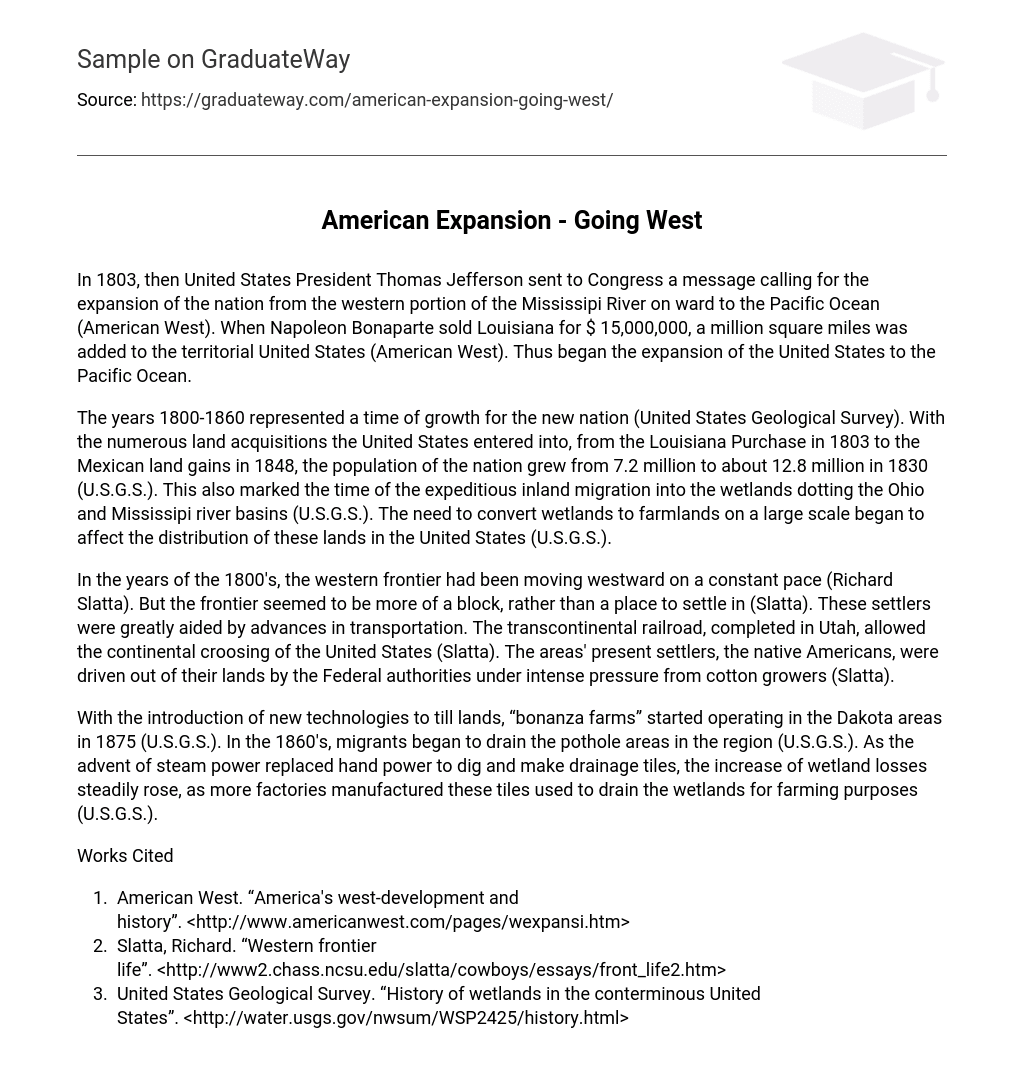In 1803, then United States President Thomas Jefferson sent to Congress a message calling for the expansion of the nation from the western portion of the Mississipi River on ward to the Pacific Ocean (American West). When Napoleon Bonaparte sold Louisiana for $ 15,000,000, a million square miles was added to the territorial United States (American West). Thus began the expansion of the United States to the Pacific Ocean.
The years 1800-1860 represented a time of growth for the new nation (United States Geological Survey). With the numerous land acquisitions the United States entered into, from the Louisiana Purchase in 1803 to the Mexican land gains in 1848, the population of the nation grew from 7.2 million to about 12.8 million in 1830 (U.S.G.S.). This also marked the time of the expeditious inland migration into the wetlands dotting the Ohio and Mississipi river basins (U.S.G.S.). The need to convert wetlands to farmlands on a large scale began to affect the distribution of these lands in the United States (U.S.G.S.).
In the years of the 1800’s, the western frontier had been moving westward on a constant pace (Richard Slatta). But the frontier seemed to be more of a block, rather than a place to settle in (Slatta). These settlers were greatly aided by advances in transportation. The transcontinental railroad, completed in Utah, allowed the continental croosing of the United States (Slatta). The areas’ present settlers, the native Americans, were driven out of their lands by the Federal authorities under intense pressure from cotton growers (Slatta).
With the introduction of new technologies to till lands, “bonanza farms” started operating in the Dakota areas in 1875 (U.S.G.S.). In the 1860’s, migrants began to drain the pothole areas in the region (U.S.G.S.). As the advent of steam power replaced hand power to dig and make drainage tiles, the increase of wetland losses steadily rose, as more factories manufactured these tiles used to drain the wetlands for farming purposes (U.S.G.S.).
Works Cited
- American West. “America’s west-development and history”. <http://www.americanwest.com/pages/wexpansi.htm>
- Slatta, Richard. “Western frontier life”. <http://www2.chass.ncsu.edu/slatta/cowboys/essays/front_life2.htm>
- United States Geological Survey. “History of wetlands in the conterminous United States”. <http://water.usgs.gov/nwsum/WSP2425/history.html>





